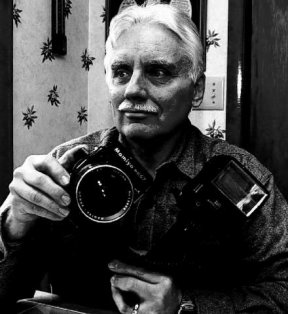|
Buffalo Police Then and Now - In the News 2005
|
|
|
|
|
| March 19, 2005 Murder suspect makes his
escape by leaping from the third floor Homicide Squad office
located in Buffalo Police Headquarters . The suspect,
sustained a leg injury, but manages to flee on foot. He was
apprehended a short time later in the area of Broadway
Avenue and William Street, one mile from Police
Headquarters. |
|
|
|

|
Police Homicide
Squad Returns
Several changes made after 3-year absence
By VANESSA THOMAS
News Staff Reporter
1/21/2005
Starting today, the Buffalo Police Department's Homicide
Squad returns after a three-year hiatus
and is specializing in solving murders. |
|
The difference is that top police officials
are implementing several changes to the squad's
procedures and policies - including monthly meetings with
police brass and prosecutors from the
district attorney's office.
"Our goal is to improve the homicide solvability
rate," said Police Commissioner Rocco J. Diina.
"This is a work in progress," he added.
"We're moving forward, and we're enthusiastic about
having a fresh start."
In February 2002, Diina decided to dissolve the squad for
fiscal reasons and replaced it with the
Major Crimes Unit, which expanded the duties of homicide
detectives to handle a barrage of
robbery investigations - as many as 1,600 a year - and other
violent crimes.
But since then, police have arrested fewer killers. The unit
solved only 20 of the city's 51
homicides last year - a 39 percent clearance rate, the worst
record in more than 10 years.
Diina has reversed his decision, bringing back a
restructured 21-member Homicide Squad with a
reduced caseload so investigators can concentrate on
catching killers.
The move comes after months of outrage by community
activists, elected officials and victims'
families, who demanded to know why the department no longer
had a squad devoted exclusively
to solving homicides.
"We've lost 200 sworn personnel, and the fiscal cuts
took a toll on our effectiveness," Diina
explained. "We're consistently re-evaluating the best
way to provide services in the most
cost-effective manner."
The new Homicide Squad will investigate all suspicious
deaths and serious assaults that are tied to
ongoing homicide investigations, Diina said.
The separate Major Crimes Unit will investigate less
serious assaults, kidnappings and home
invasions, he said. Among the initiatives in the Homicide
Squad are:
• Holding monthly meetings at which top police officials
will meet with prosecutors in the Erie
County district attorney's Homicide Bureau to evaluate
progress in homicide cases. • Updating the
written procedures and policies for handling homicide cases.
• Making it mandatory for detectives to fill out daily
activity reports.
• Assigning a separate case manager, in addition to the
detective sergeant in charge, to every
homicide to ensure all paperwork is completed.
Many of the changes are being initiated by Anthony J. Barba,
who this month was appointed chief
of investigative services. "I want to give the unit
more administrative support so they can do their
jobs in a better manner, but we can't do this alone. We
still need the assistance of the community
and the district attorney's office to do our job,"
Barba said.
Top police officials also have reorganized the entire
structure of the Homicide Squad.
Under Barba's command will be a day captain, Mark D. Morgan,
and a night captain, Mark R.
Maraschiello - each of them supervising all six detective
divisions. The change marks the first time
that a captain will be supervising at nights, when most
homicides occur.
The Homicide Unit also will include Lt. Kenneth Bienko, four
detective sergeants - James P.
Lonergan, Daniel Figueroa, Daniel Rinaldo and Daniel Derenda
- and 16 detectives.
Deputy Police Commissioner Mark E. Blankenberg said most of
the jobs in the Homicide Squad
were filled based on seniority and under the rules of the
police contract. He added that 13 of the
16 detectives are veteran homicide investigators |
|
|
|
|
Police
Photographer Tom Balk Retiring
Police Photographer Tom Balk
contributed many great photographs to this web page and I
thank him for his participation. Tom is retiring from the
Buffalo Police department after serving 33years. Tom, enjoy
your well earned retirement. |
|
 |
Police
photographer retires, citing
negative vibes after so much tragedy
By LOU MICHEL
News Staff Reporter
1/7/2005
Tom Balk has spent the last 19 years staring at
tragedy through the lens of a camera.
The Buffalo police photographer put down his
crime scene camera last weekend to begin retirement, ending
a 33-year career in law enforcement.
After all those years taking pictures of murders,
suicides and fatal accidents, Balk says the negative side of
life finally got to him.
"You see a lot of pain. You see a lot of suffering.
You see a lot of death," Balk, 56, said of a job that
taught him to put aside his emotions.
But it wasn't always possible to deny his feelings,
especially when he photographed scenes where police officers
were killed in the line of duty. |
|
That happened to him twice.
"I'd have to say the most horrendous scene I had to
photograph involved Officer Skip McDougald," Balk said.
"It sent a chill up my spine. It hit very close to
home. I was at the shooting scene and at the autopsy. It was
difficult to separate myself because of the camaraderie.
Here was a man who had devoted himself to public
service."
In addition to the April 1997 slaying of Officer Charles
"Skip" McDougald, Balk also handled the
photographs for the investigation into the line-of-duty
death of Police Officer Robert J. McLellan in February 1998.
It also troubled Balk each time he was called to the scene
of a killing involving innocent victims, especially
children.
"The young kids and babies really upset me. I'd sit
there and think that these innocent kids had no
choice," Balk said.
And perhaps that explains why he hopes to become a City
of Tonawanda classroom volunteer helping children.
"I'm going to go into the classroom and try and help
kids," said Balk, who with his wife, Wendy, has three
daughters. "I'm hoping to look for the better part of
society."
He's already off to a good start. For the last six years, he
has served on the City of Tonawanda Board of Education.
The chance to perform public service, he said, is what
initially attracted him to police work. So in 1971, he left
Bethlehem Steel and took a 50 percent pay cut to join the
Buffalo Police Department at an annual salary of $6,800.
And though the crime scene work eventually wore him down,
Balk said he always remained dedicated to his profession,
taking only three sick days in 33 years and showing up an
hour early every day he worked.
"This was a career for me and I was dedicated to the
people of Buffalo," said Balk, who was raised in the
Bailey-Kensington neighborhood.
Buffalo Police Commissioner Rocco J. Diina agreed that
police work was more than just a job for Balk.
"Tom's the kind of guy that got the job done without
the lights and sirens," Diina said. "He's a credit
to the Buffalo Police Department and his family. He will be
missed."
Balk will be more than missed.
He is the last member of the force to hold the Civil Service
title of police photographer. The department negotiated a
deal with the police union to hire civilian evidence
technicians at a cheaper rate to take crime scene
photographs.
Civilian technicians will receive an annual salary of about
$40,000 compared to the base salary of $60,000 for police
photographers.
The change, Balk says, saddens him because it represents the
end to a long-standing tradition of police photographers in
Buffalo.
"I would have loved to have seen other police officers
progress to this position," he said.
But the easygoing Balk is moving on, looking for changes
that will brighten the big picture in his life.
|
|
|
|
|
